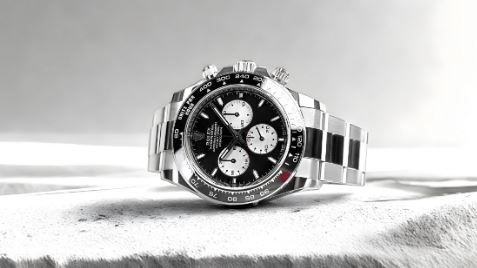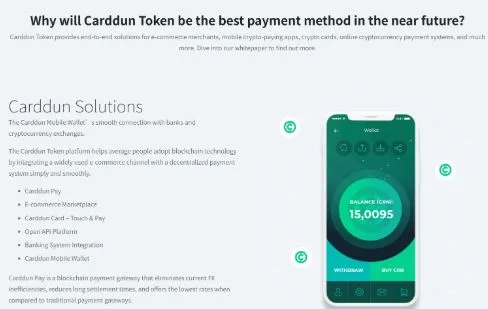In 2025, a second-hand Rolex is more than a wrist-statement
It now operates like a shock-absorber for turbulent portfolios. With inflation biting and central banks squeezing liquidity, investors hungry for hard assets have shifted from jittery equities and whipsawing crypto toward the steady tick of Geneva’s most famous crown, often benchmarking prices on rolex-replicas.
Iconic references—think Submariner, Daytona, GMT-Master II—have posted yearly gains around 8–15%, and exceptionally scarce vintage editions have soared far higher for patient holders.
This momentum rests on three load-bearing pillars: chronically limited production, borderless demand on the resale circuit, and a proven knack for shrugging off recessions.
Because Rolex throttles yearly output at roughly one million units while global appetite keeps climbing, grey-market prices have drifted well above boutique tags—most sharply for discontinued runs, full-set collector pieces, and untouched vintage steel.
Where NFTs or momentum tech stocks ride hype storms, a Rolex draws strength from first-principle fundamentals: finite supply, durable engineering, and an eighty-year pop-culture imprint that never quite leaves center stage.
With buyers from Dubai to Düsseldorf competing for the same inventory, the second-hand Rolex ecosystem has matured into an alternative asset silo that now jostles with blue-chip art, fine Burgundy, and bullion.
Pre-owned Rolexes fuse social cachet with quantifiable upside, a cocktail that in 2025 is luring capital away from more traditional benches. Below are the forces persuading sharp investors to park funds in the secondary crown economy:
- Proven Performance: Over the last ten years, select references have compounded 8–15% annually. The 2016 ceramic-bezel Daytona (116500LN) illustrates this trajectory—launch MSRP roughly $12,400, current street price north of $34k, a leap exceeding 170%.
- Engineered Scarcity: With output capped near one million pieces a year and waiting lists stretching into 2026 for steel sports models, Rolex orchestrates its own shortage. Once a reference like the Milgauss or Explorer II 16570 bows out, collector reflexes kick in and resale quotes spike.
- Global Liquidity: Because the silhouette of a Sub or a Pepsi is understood from São Paulo to Seoul, owners can convert a watch to cash within days through peer-to-peer hubs and auction platforms, even when broader markets freeze.
- Inflation Shield: Real-asset appetite intensifies as currency power erodes; during the recent 2023-24 inflation hump, pre-owned Rolex transaction volumes rose double-digit (2025 Report).
- Emotional Equity: Celebrity wrist-shots, movie cameos, and design lore add layers of sentimental demand that pure spreadsheets miss, yet the premiums they create are bankable.
- Depreciation Buffer: Because the first owner already absorbed the retail-to-resale drop, secondary buyers start on a higher foothold, similar to purchasing a car that has already cleared its steepest depreciation curve.
- Wearable Utility: A Rolex is an asset you can strap on while it accrues value—try doing that with a share certificate or case of Bordeaux.
Still, successful entry calls for more than brand love; it demands surgical timing, model literacy, and an investor’s discipline.
- Clarify Your Game Plan: Decide whether you’re hunting decade-long capital growth, quick arbitrage flips, or plain diversification. Long-view collectors often chase vintage Sea-Dweller 16600s, whereas flippers ride momentum on freshly released hype pieces.
- Map Market Pulse: Track price curves and volatility windows across platforms. Discontinued low-production years often sketch the steepest arcs; alert dashboards turn these patterns into actionable signals.
- Demand Authentic Completeness: Condition and provenance dictate yield. Prioritize watches sporting:
- Factory box and warranty card
- Untouched lugs and bevels
- Serial and calibre congruence
- Documented service stamps
- A papered Daytona, for example, routinely clears 20–30% more than a naked head-only sale.
- Think in References: Micro-differences inside a model line translate into macro-differences in price. Consider:
- Submariner 116610LN versus no-date 124060
- Daytona 116520 stainless/pre-ceramic versus early ceramic siblings
- Explorer II 16570 Polar versus black dial
- Budget Maintenance: Every 5–7 years, factor $500–$1,000 for a Rolex Service Centre overhaul, plus a fire-rated safe and magnet-free storage.
- Measure and Hold: Historical curves suggest a 5–10-year clasp yields the sweetest compounding; watchdog apps such as WatchBase streamline the tracking.
Rolex Submariner — References 16610 and 124060
The Sub remains the backbone of Rolex investment lore. A modern no-date 124060 retails around $9.1k but toggles $10.5k–$12k pre-owned, an uplift of roughly 15–30%.
The retired 16610 enjoys stronger nostalgia tailwinds; examples wearing full kits fetch $10k–$14k. Average annual appreciation sits near 8–12%, buoyed by dive heritage and Rolex’s no-compromise choke on volume.
Rolex Daytona — Refs 116500LN & Vintage 6263
Thanks to short supply and motorsport DNA, the ceramic-bezel 116500LN (MSRP $15.1k) continues to change hands at $26k–$34k, offering up to a 100% climb. Legendary “Paul Newman” 6263s blow past $100k in auction arenas.
Rolex GMT-Master II — “Pepsi” & Others
The red-blue “Pepsi” bezel 126710BLRO lists for about $10.9k yet sells for $16k–$20k. Wearable dual-time practicality, nostalgic airline roots, and colorway charisma fuel 10–14% yearly growth; discontinued 16710 aluminium-bezel variants climb even faster.
Collectors prize its slimmer case profile and pre-ceramic charm, elements that nudge values higher each quarter.
Rolex Day-Date “President” — Refs 18238 & 228238
Formerly a niche collector’s darling, the Day-Date now serves as a gold-backed hedge. Yellow-gold 18238s have shifted from $14k to north of $22k since 2020; the current 228238 retails at $38k yet trades at $45k–$52k, good for 8–11% annual tailwinds.
Rolex Explorer I & II
Explorers lure enthusiasts with lower buy-in and genuine tool-watch aura. The 214270 has climbed from ~$6k in 2020 to above $8.5k today.
White-dial “Polar” 16570s frequently clear $9.5k, handing holders 5–8% yearly clips while retaining an understated aesthetic.
Rolex Datejust
The Datejust’s versatility widens its buyer net. Two-tone vintage 1601s now command $6.5k–$8k; contemporary 126300s carry a 10–20% premium over $8k list.
Growth is steadier at 4–7% per annum, but turnover speed and demographic breadth make it a low-volatility cornerstone.
Rolex Milgauss
The science-minded Milgauss, ref 116400GV, discontinued recently, leapt from roughly $8k to beyond $12k in early 2025.
Collectors now peg its upside at 10–12% annually, especially for untouched Z-blue or black-dial variants.
Snapshot metrics across these references show retail-to-resale premiums ranging from 10% on liquid staples to triple-digit spikes on vintage grails, dovetailing with annual ROIs between 4% and 20% and confirming robust demand-scarcity matrices.
Factors Affecting Investment Viability of Pre-Owned Rolex Watches
Several macro and micro variables steer price behaviour; understanding them separates casual buyers from disciplined investors.
- Discontinuation Shock: When Rolex yanks a model—think Milgauss 116400GV or “Batman” 116710BLNR—supply taps shut off overnight, and market bids jump almost immediately.
- Condition Authenticity Premium: Full-set, unpolished pieces with original lume command up to 30% more than Franken-watches or box-less examples.
- Track Record Momentum: The ceramic Daytona’s climb from roughly $23k in 2020 to $38k+ in early 2025 illustrates how persistent demand amplifies compounding.
- Liquidity Depth: Even during crypto sell-offs or equity slumps, Submariners and Pepsis clear global platforms within days, proving their cash-like agility.
- Rarity Multiplier: Low-run dials such as vintage Stella Day-Dates achieved 200% gains between 2017 and 2024 as scarcity narratives took hold.
- Inflation Refuge: In regions with currency slide, discreet, portable assets like a steel sports Rolex function as private vaults on the wrist.
Tips for Investors
Translating theory into returns calls for disciplined acquisition tactics. The checkpoints below limit downside while nurturing upside.
- Anchor the portfolio with evergreen icons—Submariner, Daytona, GMT-Master II—whose cross-border reputation delivers both depth and velocity of bids.
- Never compromise on provenance; a missing warranty card today is a missing 20% tomorrow.
- Buy when sentiment sags—market pullbacks in late 2023, for example, shaved 8–12% off ask prices, only for values to rebound within months.
- Learn the code: reference digits reveal bracelet, bezel, and movement nuances that can shift valuations by thousands.
- Use grey-market premiums as barometers; persistent 30% spreads over MSRP hint at healthy, not hype-driven, demand.
- Think in Olympic cycles, not sprint intervals; 3–5 years allows scarcity and compounding to synchronize.
Remember, a Rolex is capital you can clasp, stroll through airport security with, and liquidate almost anywhere—an asset class hidden in plain sight.
Q: Why are pre-owned Rolex watches considered sound investments?
A: Their brand ubiquity, managed scarcity, and history of 8–15% annual appreciation make them reliable stores of value.
Q: Which models historically deliver the biggest upside?
A: Ceramic Daytonas, “Pepsi” GMT-Masters, and green-bezel Submariner “Kermits” have each doubled, even tripled, within five-year windows.
Q: How do I confirm authenticity?
A: Purchase from vetted dealers, cross-check serials, demand an authenticity card, and scrutinize movement engravings under magnification.
Q: Should I choose vintage or modern?
A: Vintage carries higher potential but also higher restoration and knowledge demands; modern steel sports pieces trade more like liquid commodities.
Q: Do Rolexes maintain value during recessions?
A: Yes—historical downturns show steel sport references dipping less and recovering faster than most luxury categories.
Q: Which condition aspects move the needle most?
A: Original parts, untouched case geometry, matching serial–reference numbers, and a full accessory set can add 20–30% to resale.





